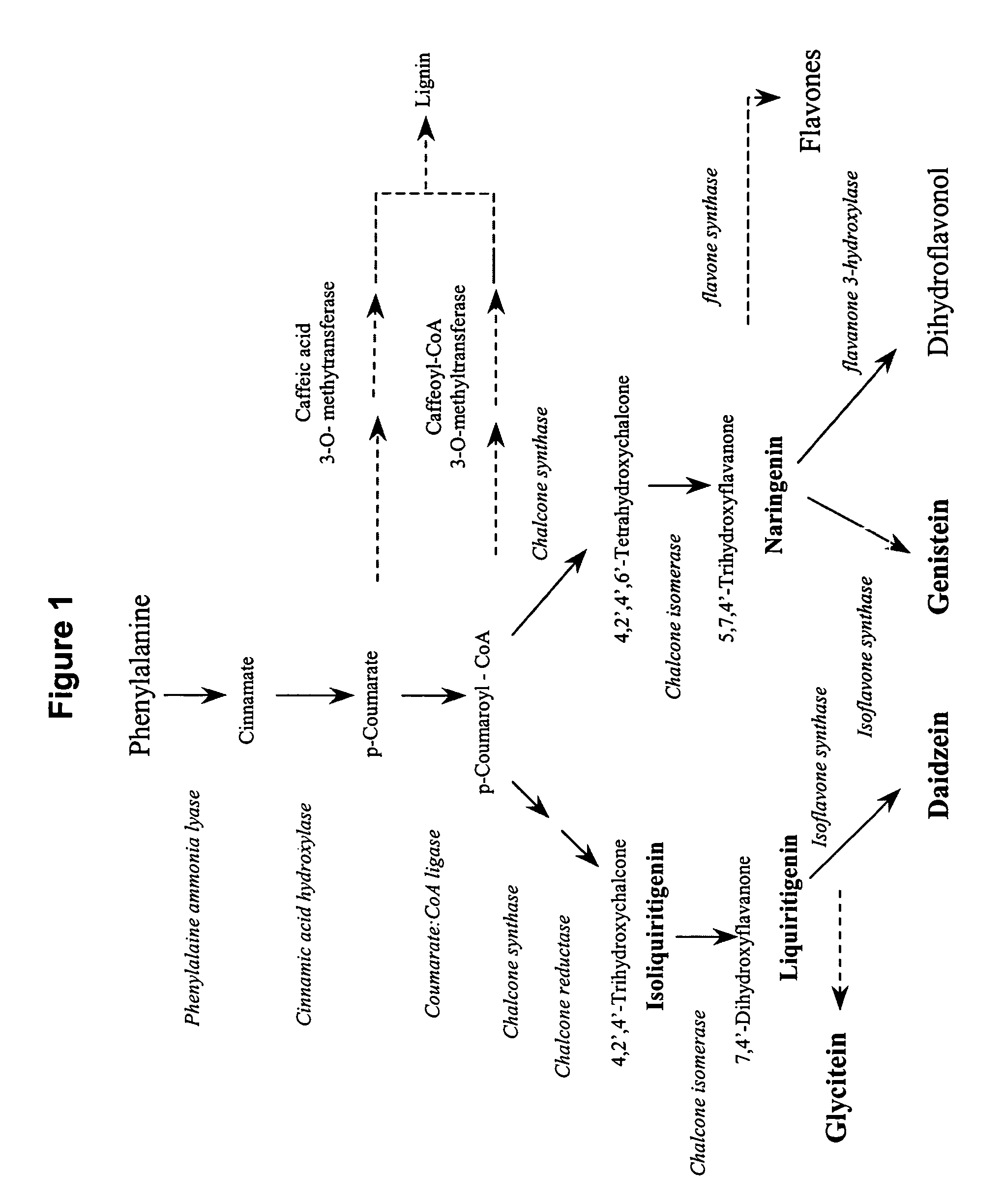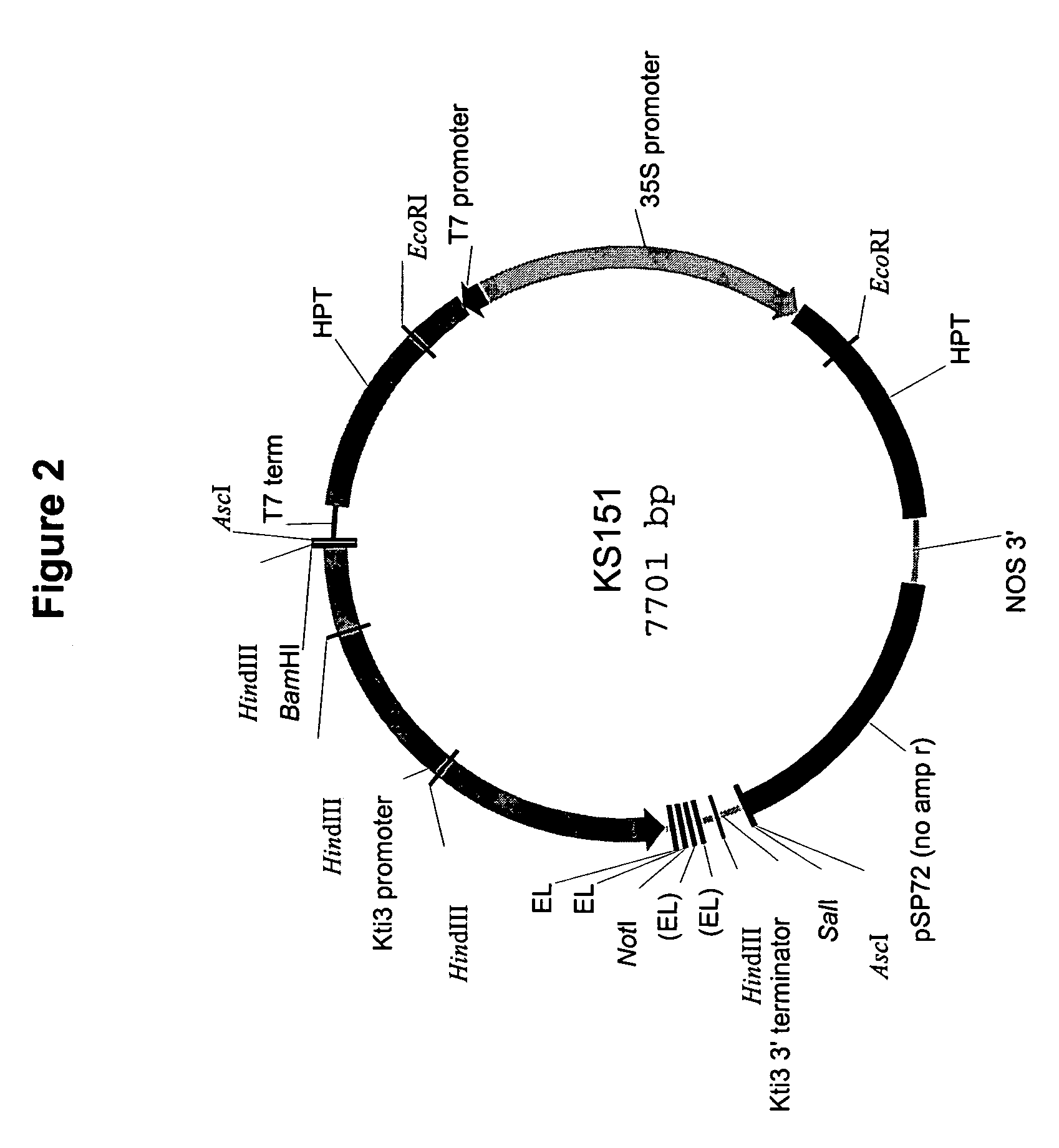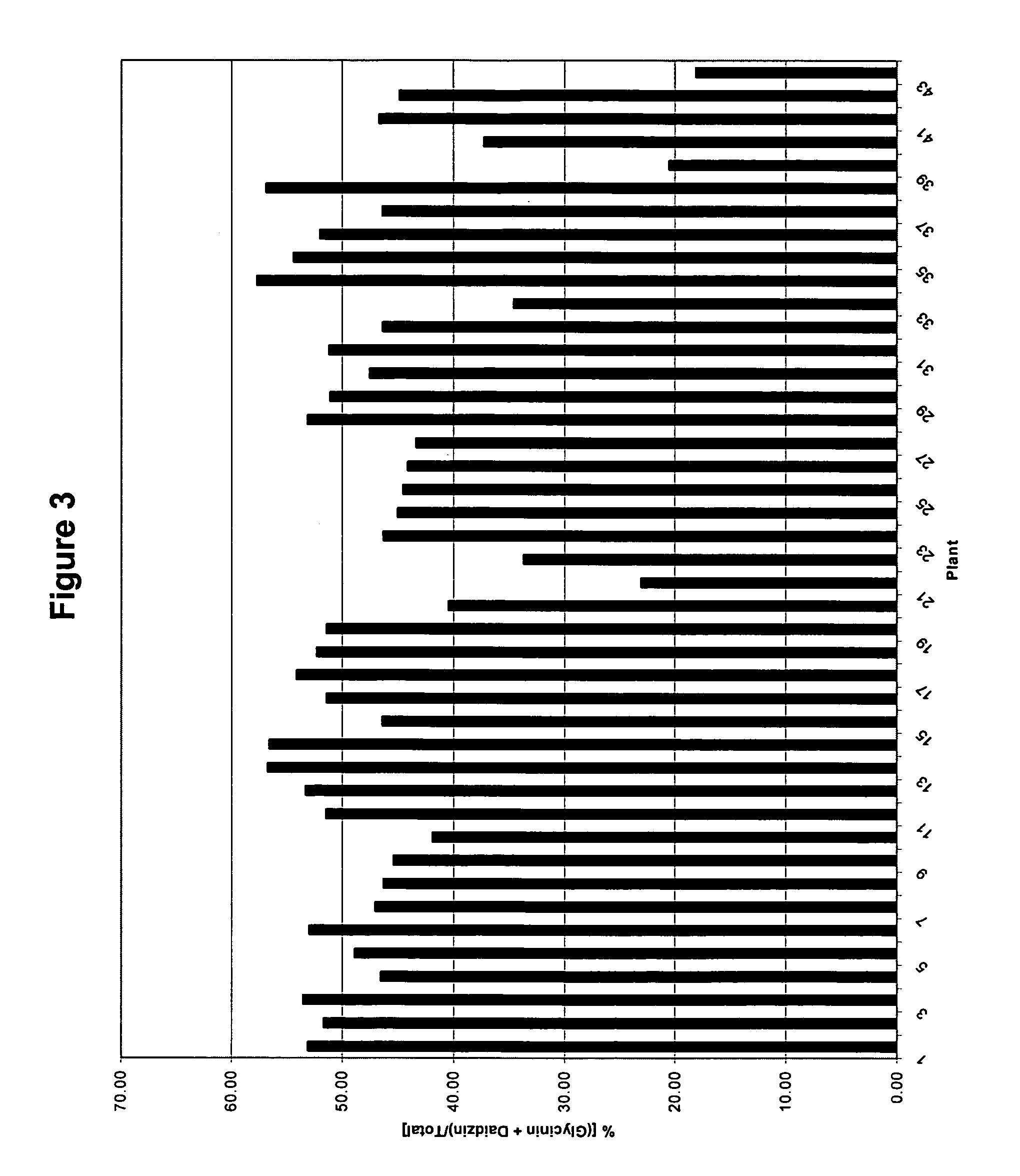Method of decreasing liquiritigenin-derived isoflavones relative to total isoflavones in plants and plants producing reduced ratio of liquiritigenin-derived isoflavones relative to total isoflavones
a technology of liquiritigenin and isoflavones, which is applied in the field of reducing the ratio of liquiritigenin-derived isoflavones to total isoflavones, can solve the problem that free isoflavones rarely accumulate to high levels, and achieve the effect of decreasing the ratio of liquiritigenin-derived isoflavones
- Summary
- Abstract
- Description
- Claims
- Application Information
AI Technical Summary
Benefits of technology
Problems solved by technology
Method used
Image
Examples
example 1
Construction of Plasmids for Transformation of Glycine Max
[0091]The ability to alter the ratio of individual isoflavonoids in transgenic plants was tested. For this purpose, a vector (plasmid AC23) was prepared that would be capable of suppressing chalcone reductase.
Preparation of Plasmid AC23
[0092]Plasmid AC23 contains a seed-specific expression promoter followed by nucleotides that promote formation of a stem loop structure flanking nucleotides encoding a portion of a soybean chalcone reductase, and followed by a transcription termination signal. It is well understood by those skilled in the art that other sequences commonly used in molecular manipulations may be used here. These sequences may include any seed-specific promoter, any structure that promotes stem-loop formation, any polynucleotide encoding any portion of the gene or genes of interest inserted in sense or anti-sense orientation with respect to the promoter and stem-loop structure, and any termination signal. It is a...
example 2
Transformation of Somatic Soybean Embryo Cultures and Regeneration of Soybean Plants
[0103]The ability to increase the isoflavonoid levels in transgenic soybean plants was tested by transforming soybean somatic embryo cultures with plasmid AC23, selecting transformants that grew in the presence of hygromycin, allowing plants to regenerate, and measuring the levels of isoflavone produced in seeds.
[0104]Soybean embryogenic suspension cultures were transformed with plasmid AC23 by the method of particle gun bombardment.
[0105]The following stock solutions and media were used for transformation and regeneration of soybean plants:
Stock Solutions (Per Liter):
[0106]MS Sulfate 100× stock: 37.0 g MgSO4.7H2O, 1.69 g MnSO4.H2O, 0.86 g ZnSO4.7H2O, 0.0025 g CuSO4.5H2O.
[0107]MS Halides 100× stock: 44.0 g CaCl2.2H2O, 0.083 g KI, 0.00125 g COCl2.6H2O, 17.0 g KH2PO4, 0.62 g H3BO3, 0.025 g Na2MoO4.2H2O, 3,724 g Na2EDTA, 2.784 g FeSO4.7H2O.
[0108]B5 Vitamin stock: 100.0 g myo-inositol, 1.0 g nicotinic ac...
example 3
Analysis of Isoflavone Levels in Seeds of Transformants Containing the CHR Construct
[0120]The quantity of isoflavones in seeds from transgenic plants comprising the CHR construct was assayed. Seeds were ground, the combined powder was extracted with methanol, hydrolyzed with base, and analyzed. Base hydrolysis converts both malonylglucoside conjugates and acetylglucoside conjugates into glucoside conjugates (genistin, daidzin, and glycitin). Total glucoside conjugates are then measured. While aglycones are not measured by this method the amount of aglycones present is in such low quantities as to not affect the final results. The isoflavone numbers are reported as parts-per-million (ppm) of glucoside conjugates in soybean. A more detailed explanation of the preparation of seed extracts and measurement of isoflavones follows.
[0121]Five to eight seeds per transformant were combined and the seeds were ground to a fine powder using a single seed grinder set to the finest setting. One gr...
PUM
| Property | Measurement | Unit |
|---|---|---|
| Fraction | aaaaa | aaaaa |
| Fraction | aaaaa | aaaaa |
| Volume | aaaaa | aaaaa |
Abstract
Description
Claims
Application Information
 Login to View More
Login to View More - R&D
- Intellectual Property
- Life Sciences
- Materials
- Tech Scout
- Unparalleled Data Quality
- Higher Quality Content
- 60% Fewer Hallucinations
Browse by: Latest US Patents, China's latest patents, Technical Efficacy Thesaurus, Application Domain, Technology Topic, Popular Technical Reports.
© 2025 PatSnap. All rights reserved.Legal|Privacy policy|Modern Slavery Act Transparency Statement|Sitemap|About US| Contact US: help@patsnap.com



